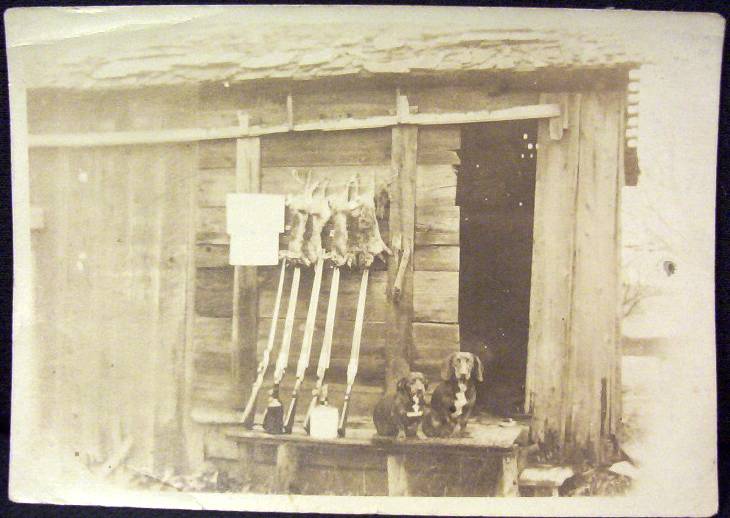Schwarz
View current page
...more recent posts
woman with trailer
If the reigning monarch of Iraq hadn't been assassinated in July 1958, the Frank Lloyd Wright-designed Grady Gammage Memorial Auditorium wouldn't exist in its current form.
The auditorium is the site of tonight's presidential debate between President George W. Bush and Sen. John Kerry.
photos 1, 2
Lamp House
For over 100 years, Frank Lloyd Wright has cast his shadow across Madison. With the passage of time, the Wisconsin-grown architectural genius can finally be considered for the lasting aesthetic legacy he left the city, uncomplicated by the sometimes uneasy personal relations he had with a city he could have called home.
Buffalo knocks down their fukin' FLW Larkin Bldg
LMDC announces
"In the early '50s Britain remained in a state of economic austerity that made the consumerist world appear exotic to British Pop artists. For the Americans, on the other hand, the commercial landscape was almost second nature, to be treated with a show of cool. Common to both groups, however, was the sense that consumerism had changed not only the look of things but the nature of appearance as such, and all Pop found its principal subject there: in the heightened visuality of semblance, in the charged iconicity of people and products (of people as products and vice versa) that a mass media of corporate images had produced. (1) The consumerist superficiality of signs and seriality of objects also had to affect architecture and urbanism as well as painting and sculpture. Accordingly, in Theory and Design in the First Machine Age (1960), Banham imagined a "Pop architecture as a radical updating of modern design under the changed conditions of a "Second Machine Age" in which "imageability" became the primary criterion. (2) Twelve years later, in Learning from Las Vegas (1972), Venturi and Scott Brown advocated a Pop architecture that would return this imageability to the built environment from which it arose. However, for the Venturis this imageability was more commercial than technological, and it was advanced not to update modern design but to displace it; here, then, Pop began to be recouped in terms of the postmodern. (3) The classic age of Pop can thus be framed by these two moments: between the retooling of modern architecture urged by Banham on the one hand and the founding of postmodern architecture prepared by the Venturis on the other."
-- hal foster / oct '04 artforum
warped space
"Beginning with agoraphobia and claustrophobia in the late nineteenth century, followed by shell shock and panic fear after World War I, phobias and anxiety came to be seen as the mental condition of modern life. They became incorporated into the media and arts, in particular the spatial arts of architecture, urbanism, and film. This "spatial warping" is now being reshaped by digitalization and virtual reality."
world police
toh carlisle project
how you say, Loews ?
ericofon telephones collected repaired and sold
bob dylan chronicles vol. 1

really crappy richard prince on warhol & himself piece in oct '04 artforum
paul rudolph and the sarasota school modernists
The Serpentine Gallery has commissioned the Dutch architectural practice MVRDV to design a spectacular Pavilion that will completely cover the entire height and width of the Serpentine Gallery on all four sides throughout the summer of 2005.
openhousenewyork
reusing big boxes
"Territories: Islands, Camps and Other States of Utopia is one of a series of publications from Kunst-Werke (KW) gallery in Berlin about the politics of space. It documents art works from an exhibition of the same title; it also compiles additional work by critics, architects, artists, and filmmakers. In the wake of documenta X and XI exhibitions of contemporary art in Kassel, Germany, books like these are evidence of recent collaborations that look for continued or enhanced political impact. More than installation art bounded by the gallery, these works are positioned on the front lines of global conflict. "
"Today “criticality” is under attack, seen by its critics as obsolete, as irrelevant, and/or as inhibiting design creativity. What is more, the criticisms that are increasingly frequently being made come from an interesting diversity of sources. To start to make sense of this emergent situation, we might try to locate the beginnings of the evident shift of opinion against this once-so-dominant theoretical discourse in architecture. One interesting precursor of current comment was an outburst by Rem Koolhaas at one of the series of conferences organized by ANY magazine, this one at the Canadian Centre for Architecture in 1994: “The problem with the prevailing discourse of architectural criticism,” complained Koolhaas, “is [the] inability to recognize there is in the deepest motivations of architecture something that cannot be critical.”(2) But if Koolhaas' complaint was a harbinger of things to come, probably the first frontal challenge to criticality was a text published by Michael Speaks, the Director of Graduate Studies at Southern California Institute of Architecture, in the American magazine Architectural Record in 2002.(3) In a startlingly revisionist text, Speaks explicitly abandoned the “resistance” that he had learned from his own teacher, Fredric Jameson, in favor of a model of a new, alternative, and efficaciously integrated architecture that would take its cues from contemporary business management practices.(4)"
HDM Fall 2004/Winter 2005, Number 21
Rising Ambitions, Expanding Terrain
Realism and Utopianism
